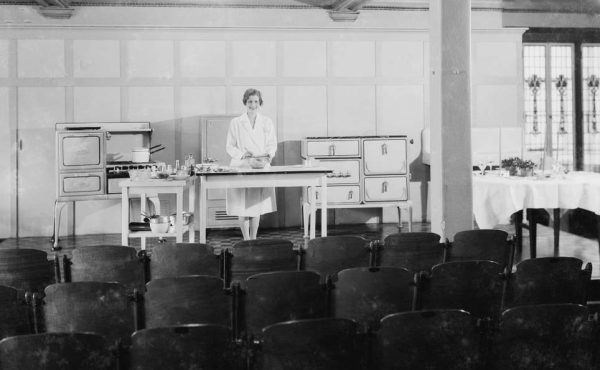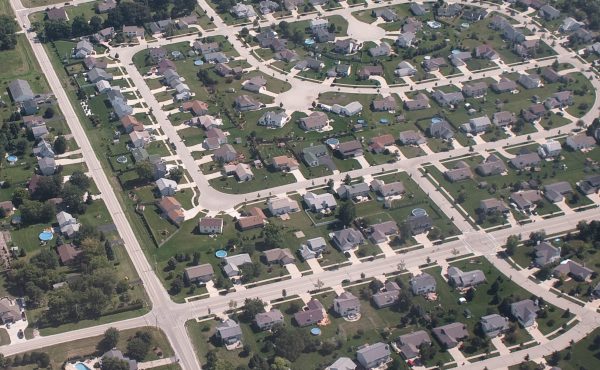
After the first ballot at the NDP leadership convention, Michael Prue was dropped from the ballot after getting only 11.5% of the vote.
While his 4th-place finish wasn’t necessarily a surprise, the number of votes he received was strikingly low, especially given his solid experience and a performance in the race that people seem to agree was reasonably strong. There are many explanations — one crucial factor was his almost complete lack of labour union support (union votes were, in addition, weighed upwards so that they made up 25% of the total vote — not exactly a one-member-one-vote system).
But, given that he was the only candidate to make city issues a central part of his platform, it also raises the question of whether city issues are really on the radar of the NDP’s membership. In an interview with Spacing after the first-ballot results, Prue said that he didn’t see any of the other three candidates talk about city issues. “Tell me,” he asked Spacing, “who else had an urban agenda?”
The issues that the other candidates have brought up (environment, health, manufacturing jobs) certainly apply to cities, as well as everywhere else. But the other three candidates have also brought up issues that apply to specific areas (e.g. Northern Ontario, rural Ontario), clearly in response to interest from NDP members. Yet there seems to be little demand from the membership to address the issues specific to cities that Prue addressed.
The Liberal government, meanwhile, although it has not been radical, has introduced a whole series of measures specific to cities, and to the Greater Toronto Area in particular — creating Metrolinx, funding transit expansion, creating the Green Belt, passing the City of Toronto Act, even modifying the Ontario Municipal Board’s mandate (a little). While there is plenty to discuss about each of these measures, it does show that cities in general, and the Greater Toronto Area in particular, are firmly in the Liberal government’s radar. And urban ridings are the backbone of the Liberal majority.
The NDP has some natural affinities with urban issues — the fact that the new leader will be a former city councillor, either Andrea Horwath from Hamilton or Peter Tabuns from Toronto at the time of writing — and that six of their ten seats are in central cities, attests to that. And urban seats would seem like the the most promising places for them to make inroads into the Liberal majority. But although the NDP makes positive noises about city-specific issues, these issues really don’t seem to be a significant focus for either their membership or their caucus.
(On re-reading this post, it occured to me that there is some irony in the fact that the federal NDP under Jack Layton has been very vocal about city issues — even though the federal government has less power over cities than the provincial government. That provides some food for thought re. what I say above.)




11 comments
And the NDP makes itself even more irrelevant… What bright side exists is that the more the NDP erodes their chance at getting the urban-progressive vote, the more of it goes to the Liberals, though much will simply evaporate in despair.
When are the cities not at the front of politics in this province. Ask anyone who comes from Northern Ontario how much consideration they get compared to the South.
Explains why none of the MPPs supported the back-to-work legislation for York University. If I were a NDP MPP, I would have voted independently or made my views known that I did support it, to distance myself from my opposition. Especially since the majority of Ontarians realized that the collective bargaining had failed and was going nowhere.
By voting against it, I think it set the party back 10 years. Good jorb there.
Also ironic that the NDP put so much faith in union support, yet some of the largest union ridings vote Conservative (looking at Oshawa).
The troublesome thing about unions as a political force is that they’re defenders of the status quo (they, ironically, have a fair bit in common with big business that way). There’s no union that represents “green economy” jobs that don’t yet exist, or even one for the increasing number of freelance/contract workers. I’m not sure the NDP realizes that sometimes the unions of Ontario don’t have the province’s best long-term interests at heart, even from a left-wing perspective.
Jack Layton/the federal NDP does have a good track record on cities but if you look at their platform from that last election compared to 2006, they changed from having an explicit Cities section to having various platforms for things like transit, community safety, arts and culture, etc. In other words, they realized that an explicit cities agenda doesn’t sell nationally but that all of the things that comprise the cities agenda are valued by a large swath of the Canadian electorate. Maybe the issue isn’t so much getting a party to have a Cities section in their platform, as much as it is finding a new way to position the cities agenda so it appeals to people in communities like the City of Port Colborne — technically a city but not one that thinks of itself like the City of Toronto or the City of Hamilton (nor, I’m sure, does it want to).
agreed; and now that the dust has settled (over the red stains on the floor from the NDP collectively cutting their own throats), i lament that Michael Prue, who i developed a strong respect for, living in East York (before going west, ‘old man’), has had his options curtailed. [maybe potential as a ‘scarlet liberal’?]
Adam > that’s an interesting point. One of the things I liked about Prue’s cities platform was that he tried to expand issues that have been rather Toronto-centric and apply them to all cities in the Province, where they are also relevant.
In her acceptance speech, Horwath signalled that she would encourage each of the other candidates to pursue their big issue – noting Prue’s cities agenda as one of them – so it may be that Prue will have the leeway to develop a real urban platform for the NDP in the next election.
I’m disappointed that the media largely ignored this campaign.
Angus: I think this was intentionally done by the NDP. There is no other way to explain it since each candidate’s entire focus was signing up new members and making sure they voted for them. They were only communicating to the membership, so it became an internal affair. All candidates spent, at minimum, 25% of their platform on party renewal and “change”.
@Ben: If you take a gander at http://multimedia.thestar.com/acrobat/8d/11/799681d942e4a7e5b0b688a6d5c5.pdf, you’ll see in Oshawa that union-members DID support the NDP in substantial numbers, as evidenced by the strong orange around the GM plant (see ‘Two solitudes’). It’s just that the plant workers were outnumbered by middle-management types living to the north of them. The end result doesn’t tell the whole story.
I know this was for the 2006 election, but I’d be very surprised to see the map change for 2008.
@Ben: I think a look through the political history books would also be educational: Oshawa has had more NDP/CCF representatives at both levels of government than either the Tories or Liberals (including Ed Broadbent holding the place for 22 years(!)).